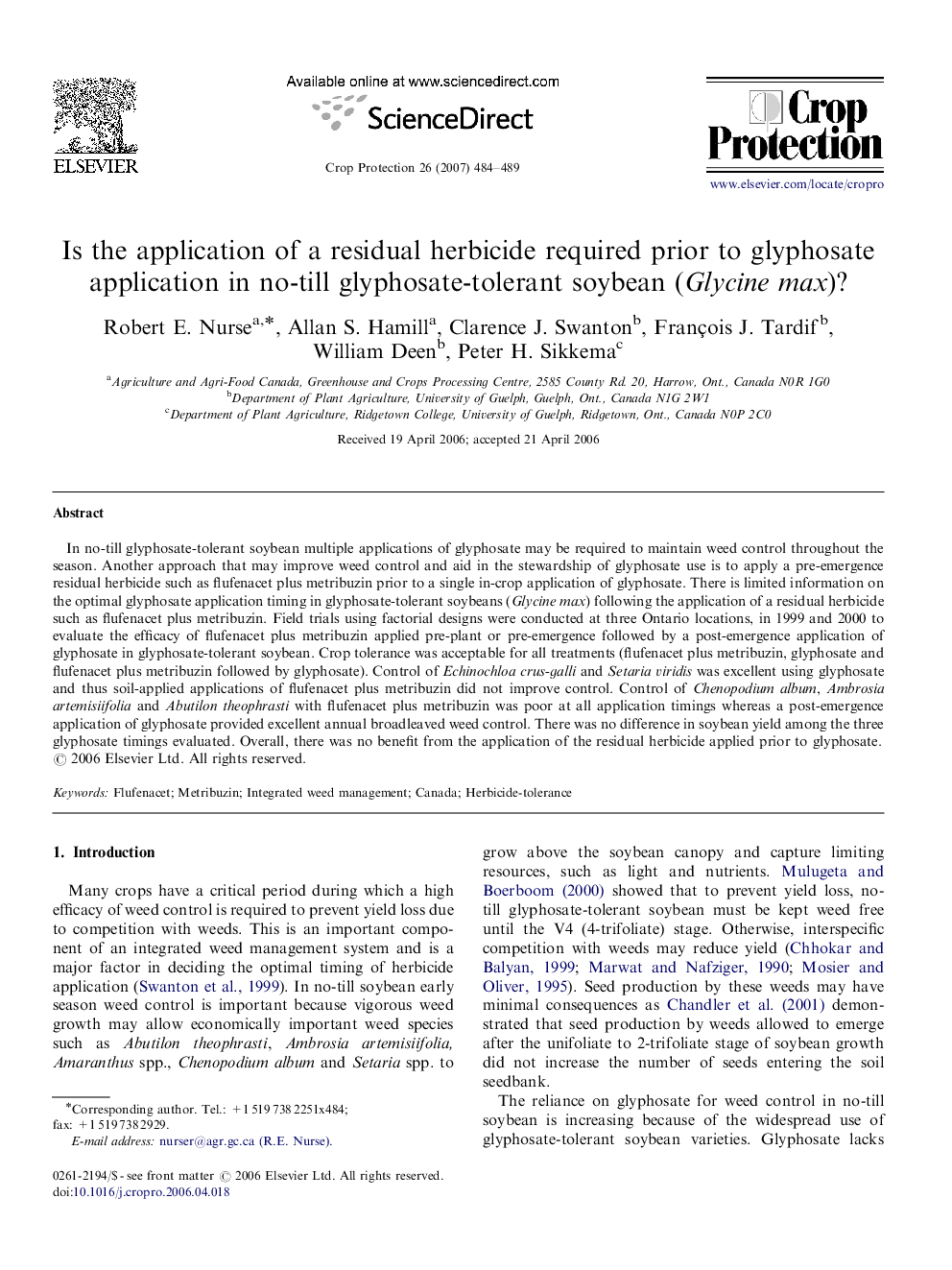| Article ID | Journal | Published Year | Pages | File Type |
|---|---|---|---|---|
| 4507170 | Crop Protection | 2007 | 6 Pages |
In no-till glyphosate-tolerant soybean multiple applications of glyphosate may be required to maintain weed control throughout the season. Another approach that may improve weed control and aid in the stewardship of glyphosate use is to apply a pre-emergence residual herbicide such as flufenacet plus metribuzin prior to a single in-crop application of glyphosate. There is limited information on the optimal glyphosate application timing in glyphosate-tolerant soybeans (Glycine max) following the application of a residual herbicide such as flufenacet plus metribuzin. Field trials using factorial designs were conducted at three Ontario locations, in 1999 and 2000 to evaluate the efficacy of flufenacet plus metribuzin applied pre-plant or pre-emergence followed by a post-emergence application of glyphosate in glyphosate-tolerant soybean. Crop tolerance was acceptable for all treatments (flufenacet plus metribuzin, glyphosate and flufenacet plus metribuzin followed by glyphosate). Control of Echinochloa crus-galli and Setaria viridis was excellent using glyphosate and thus soil-applied applications of flufenacet plus metribuzin did not improve control. Control of Chenopodium album, Ambrosia artemisiifolia and Abutilon theophrasti with flufenacet plus metribuzin was poor at all application timings whereas a post-emergence application of glyphosate provided excellent annual broadleaved weed control. There was no difference in soybean yield among the three glyphosate timings evaluated. Overall, there was no benefit from the application of the residual herbicide applied prior to glyphosate.
